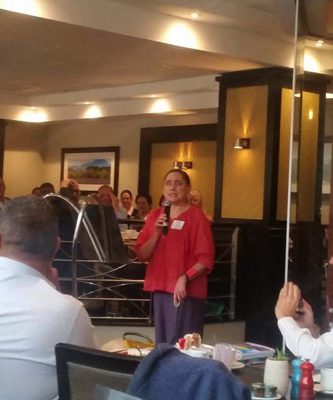
A few months ago I took a long, hard look at the work I’m doing and began to think about ways I could make my content more accessible for all consumers. I totally get it. I understand why most content creators either don’t know or don’t care about the potential needs of the disability community. It’s simply not something that occurs to them. In this series of posts I will give you a few reasons why it makes good business sense to make your content more accessible, then look at some of the steps I’ve taken. I hope these articles will show you some simple and quick ways to make your own content more inclusive.
Today I’ll look at work I’m doing to make visual material more accessible to the blind by describing what is being shown.
Here are a few reasons why you should consider doing so. The first is to broaden the reach of your content. Not only will it make your offerings able to be consumed by a new target audience, including those who are blind and partially blind, but it will also make your content more easily available to those with unstable connectivity and those who may struggle to make sense of the images you share. Secondly, it gives people a different way of understanding the information you are conveying in your image, a graph, or other graphic representations. It helps to bring home the point you are making with the image and gives greater clarity. The final reason I want to offer, and please bear in mind that this is the first one that is solely for the benefit of the blind and partially blind, it promotes inclusion and gives us an equal opportunity of engaging with your content, which we may otherwise be denied. And, with the fierce competition that content creators face nowadays, doesn’t it make sense to reach to as big an audience as you can?
I should add that in many countries there is a legal requirement to make information accessible. Legislation like the ADA (Americans with Disabilities Act) in the USA may exist in the markets you reach with your content, and this may be a compelling reason for some.
Let me share a few of the steps I am taking to increase my visual content’s accessibility. Hopefully this will give you a few ideas to incorporate in your own materials.
1 Adding alt text to social media.
My social media platforms of choice are Facebook and LinkedIn. When I post on these platforms, I look for the alternative text (alt text) fields so I can briefly describe any images I share along with my posts.
2 Adding alt text to my blog posts.
My blog is part of my WordPress site, and they have functionality to add alt text to each blog that includes an image. I admit that I am lazy and have a sighted person who helps me publish my blogs and podcasts, but I provide the alt text for each article and see it reflected on my site after the content is published.
3 Adding alt text to my podcast.
While it is mostly an audio format, each episode of my podcast, A Different Way of Seeing, includes a small image that relates directly to that episode. I add a description of the image into my show notes that appear when you listen to the show.
4 Adding alt text to YouTube videos.
This is a fairly new step for me, but one I hope to continue. When I post a video on YouTube, I now add a brief description of what people are looking at. This is included in the video description field. While it doesn’t give much detail, at least it can help a non-visual person make sense of what is happening on screen when the content may not be obvious. A great example of this is the videos I’ve started sharing of me working with my guide dog, Normandy. The audio is only the background ambience of the area in which I’m walking, and the brief description at least gives the context of what is being viewed.
5 Adding alt text to Paws for Thought.
As you may know, I’m busy with the second edition of my previous guide dog’s story, called Paws for Thought. There have always been images in the book, and it’s always bothered me that I and others like me are unable to access those images. In the second edition I will include short descriptions of each photograph that I hope will correct this oversight and will be available in the text of both the print and electronic book formats.
I’m by no means perfect at making all my online images accessible. I don’t know if images on my website have alt text, and I can’t seem to find a way to describe multiple images on Facebook. Likewise, I get myself in a total muddle when trying to add more than a single image to LinkedIn and describe them accurately. And I’m sure there are other things I’m missing. Not to mention that I have not even tried going back into my catalogue of previous content to describe things. But I am doing what I can for the moment and hope to continue to grow and improve over time.
If I were to try and give you step by step instructions on how to implement these strategies, I would probably get it all wrong and confuse everyone. Besides which, as each platform is updated the process can change, so any instructions I give now may not work in the future. You could look at the help section of each platform and see what is included. And you can always do an online search for the correct process.
Alternatively, if you’d like me to look at your content and to offer a few suggestions to make your content more inclusive, feel free to reach out to me for an assessment on https://www.loisstrachan.com/contact-lois/
Next time, ways I am making my content more accessible for the Deaf and hearing loss communities.





